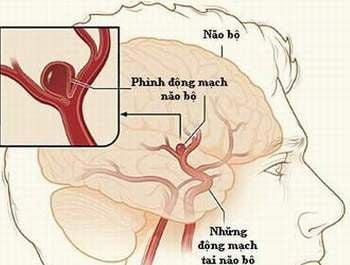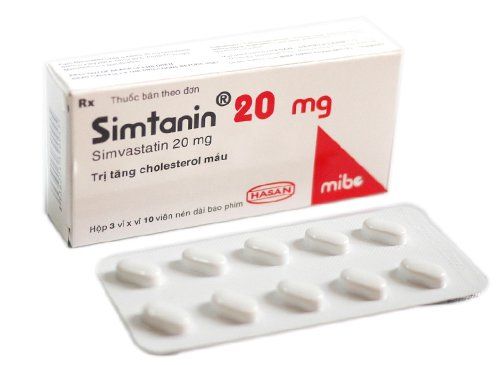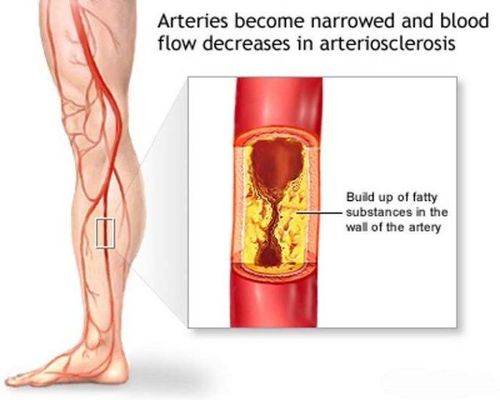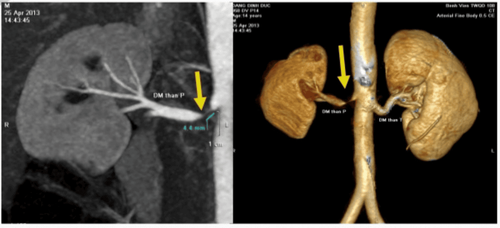This is an automatically translated article.
The article was professionally consulted with Specialist Doctor I Le Thanh An - Interventional Cardiologist - Department of Medical Examination & Internal Medicine - Vinmec Nha Trang International General Hospital.Endovascular interventional therapy is the best method to treat cerebrovascular diseases. Bring high efficiency and reduce the risk of complications compared to surgical methods.
1. What is endovascular intervention?
Endovascular intervention is a treatment performed in the lumen of a blood vessel using long, thin catheters. The catheters are inserted at the wrist or inguinal position, and are driven deep into the blood vessel to the location of need for intervention (brain, heart, kidney, liver, or peripheral blood vessels, ...) . During the procedure, the doctor will manipulate based on the dynamic X-ray images projected on large screens to perform angioplasty, thrombectomy, stenting, repair of vascular malformations or other surgical procedures. defects in the birth of the heart, occlusion of blood vessels to destroy tumors (such as liver tumors),...Vascular diseases are the main causes of damage to arteries and veins. If not treated in time, the patient will become disabled or even die. The disease is common in elderly people with inadequate nutrition.
The main artery lesions patients encounter are atherosclerosis or thickening of the artery walls due to fatty deposition. This condition causes the blood vessels to become blocked, not supplying enough blood to the organs in the body to work. The consequences of a blood vessel blockage are very dangerous, with mild muscle pain when active, more severe necrosis, kidney failure, stroke, and even death.
Diseases caused by damage to the veins such as varicose veins that cause blood stasis, ulcers that do not heal when blood clots are formed. The disease becomes more severe if the blood clot breaks off and travels to the lungs, causing a pulmonary embolism, which can be fatal.
In general, diseases related to blood vessel damage cannot be underestimated. Therefore, in order to limit the possible complications and reduce the burden on health, endovascular intervention is considered the best treatment option.
Within the framework of this article, we will focus on the topic of cerebrovascular intervention.

2. Cases of cerebrovascular intervention
2.1. Endovascular intervention to remove blood clots in acute ischemic stroke The subject of this endovascular intervention is a patient with a confirmed diagnosis of acute ischemic stroke (caused by occlusion of a cerebral artery supplying blood to the brain). and failure of fibrinolytic therapy, or an indication for fibrinolytic therapy, within the first 6 hours of onset of focal neurologic symptoms, such as slurred speech, slurred speech, weakness, or loss of hand sensation – Legs on one side of the body,... In many cases of patients with acute cerebral infarction coming late after 06 hours from the onset of symptoms, the treating doctor will consider giving the patient some additional diagnostic tests. imaging such as cerebral perfusion MRI (with magnetic contrast pump), or cerebral perfusion CT scan (with contrast pump) to determine if there is a lot of necrotic brain area or how much of the brain can be saved? Thereby, the interventional doctor will decide whether to proceed with endovascular intervention to remove the thrombus late for the patient or not, the window of action is within 24 hours from the onset of symptoms.How it's done: a catheter will be placed into the inguinal artery, threaded along the iliac, aorta, and/or vertebral arteries on the side of the blocked cerebral artery, and this catheter shall be brought as close as possible to the occlusion position. Then, a metal wire is threaded through the blockage to the distal part of the artery. Finally, the artery will be recanalized with a balloon and/or a thrombus-collecting stent. On a case-by-case basis, the doctor will consider injecting an appropriate dose of thrombolytic drug into this blocked artery to maintain the patency of the artery, limiting re-occlusion due to the re-occurrence of the thrombus.
For revascularization in acute ischemic stroke, endovascular intervention should be performed as soon as possible, preferably 4.5 hours (since less than 4.5 hours is the fibrinolytic window). IV), or less than 4.5 hours in patients who have received thrombolytics but have evidence of large artery occlusion on CT or MRI of the brain after the onset of stroke. If for some reason this treatment is delayed too long, the treatment will not work.
Patients need to choose large and reputable hospitals to perform endovascular interventions. Because at these hospitals, there will be a team of highly skilled and experienced doctors. To carry out the therapy requires a sufficient team of doctors including: neurologists, radiologists and surgeons.

2.2. Direct catheterization of the carotid sinus (FCC)
The case of direct cavernous carotid artery catheterization is performed for patients with post-accident injuries. After a few months of the accident, the patient showed symptoms of bulging eyes, strabismus, reduced vision, a murmur or ringing in the ears or eyes.Endovascular intervention that leads to the catheterization and then inflates the balloon or releases a metal coil to obstruct the flow while preserving the internal carotid artery by using a balloon or metal coil under microcatheter support
This endovascular intervention method is more effective and reduces complications than surgery.
2.3. Treatment of cerebral endovascular intervention
Cerebral endovascular therapy is performed to treat cerebral aneurysms. If the brain aneurysm has not ruptured, the patient will be advised to undergo endovascular intervention if the aneurysm has a high risk of rupture. Because an aneurysm has not ruptured, the annual risk of rupture increases with the size of the aneurysm (the larger the aneurysm, the higher the risk of rupture).In case of ruptured aneurysm, it is necessary to remove the aneurysm and perform endovascular embolization of the aneurysm, which increases the recovery rate as well as reduces possible complications.

2.4. Endovascular interventional treatment of cerebral arteriovenous malformation
Cerebral arteriovenous fistula is a common disease in young people. There are two clinical manifestations of cerebral arteriovenous fistula, rupture and rupture. To treat cerebral arteriovenous catheterization, three methods can be used: endovascular intervention, surgery and radiosurgery.Usually, patients when treating the disease will be used a combination of these 3 methods. However, using Onyx endovascular intervention will provide safer results. If a cerebral arteriovenous catheter ruptures, priority should be given to removing the malformation first.
Any questions that need to be answered by a specialist doctor as well as if you have a need for examination and treatment at Vinmec International General Hospital, please book an appointment on the website to be served.
Please dial HOTLINE for more information or register for an appointment HERE. Download MyVinmec app to make appointments faster and to manage your bookings easily.














